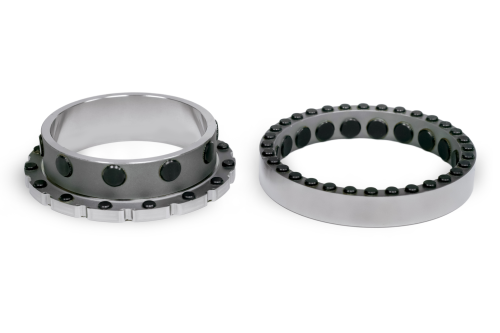
US Synthetic Bearings has exhibited its diamond bearing technology to nearly 2,000 national leaders looking to improve long-term American competitiveness in the energy sector.
“It’s a rare and exciting opportunity to have so many key players in the energy community under one roof,” said Craig Cooley, general manager of US Synthetic Bearings.
The ARPA-E Energy Innovation Summit took place between February 28-March 2, 2011 at the Gaylord Convention Center outside Washington, DC, USA.
The US Department of Energy has also given US Synthetic Bearings a grant to look at the advantages of diamond bearings in harsh underwater conditions for power generation.
The US $186,000 grant will be used to investigate whether polycrystalline diamond (PCD) thrust bearings will have a wide spread role in the DOE’s renewable energy program by enabling underwater turbine generators, otherwise known as marine hydrokinetic (MHK) energy machines.
US Synthetic Bearings will use its testing facility in Orem, Utah, USA to measure the effects of water lubrication on PCD bearings intended for use in MHK energy machines.
MHK energy machines rely on underwater currents to spin turbines, creating electricity. The technology is still mostly experimental as researchers try new ways to reduce downtime and maintenance costs. One major obstacle is inadequate bearing technology, with no current conventional bearing technology capable of operating with variable loads, in seawater, with frequent starts and stops and with little or no maintenance while absolutely eliminating the possibility of oil pollution into the water.
US Synthetic believes PCD bearings have the potential to overcome these challenges, making MHKs an economically viable and sustainable renewable energy source. An MHK with PCD bearings has no seals, accommodates variable loads from tides without bearing failure, and cannot contaminate the seawater with oil—since seawater is the bearing lubricant.
“We believe synthetic diamond has tremendous potential as an engineering material,” said Craig Cooley, General Manager of US Synthetic Bearings. “We hope that demonstrating the effectiveness of PCD bearings in MHKs will expose other members of the scientific and engineering community to the advantages of using this material. Synthetic diamond is key where hardness, thermal conductivity, strength, toughness, and abrasion resistance are required.”
The bearing are made by placing diamond grit or diamond powder between 2 μm-70 μm next to a tungsten carbide substrate, which is then placed in a special high pressure cubic press which uses proprietary methods to make the bearings. The press is then subject to to high pressure of around 1 million psi, and high temperature of around 1400°C. The colbalt in the tungsten carbide substrate becomes liquid and flows around the diamond grains, facilitating the diamond grain growth. When the temperature and pressure are back to normal, the tungsten carbide and PCD compact is placed in a stainless steel bearing ring.
While in the past US Synthetic used make the diamond powder from graphite, it now sources it from China and other parts of Asia.
The company says that the bearings, made of sintered powder, are tougher than single crystal diamonds because there is no risk of fracture. The colbalt and the tungsten carbide also improves the hardness and makes it possible to attach the PCD to the stainless steel ring.
The bearings have some improvements over stainless steel bearings, due to their low friction coefficient in air, water and oil, and high load capacities. As a result, use of the bearings has become more common in oil and gas drilling tools, pumps, hydrokinetic energy and tidal turbines.




